The 1970s Alpine rally wreck brought painstakingly back to life
Thought to have been destroyed during a Kenyan recce, this 1973 Alpine A110 is proof that rally cars never die. Adam Towler meets its fan owner, who transformed it from wreck to runner
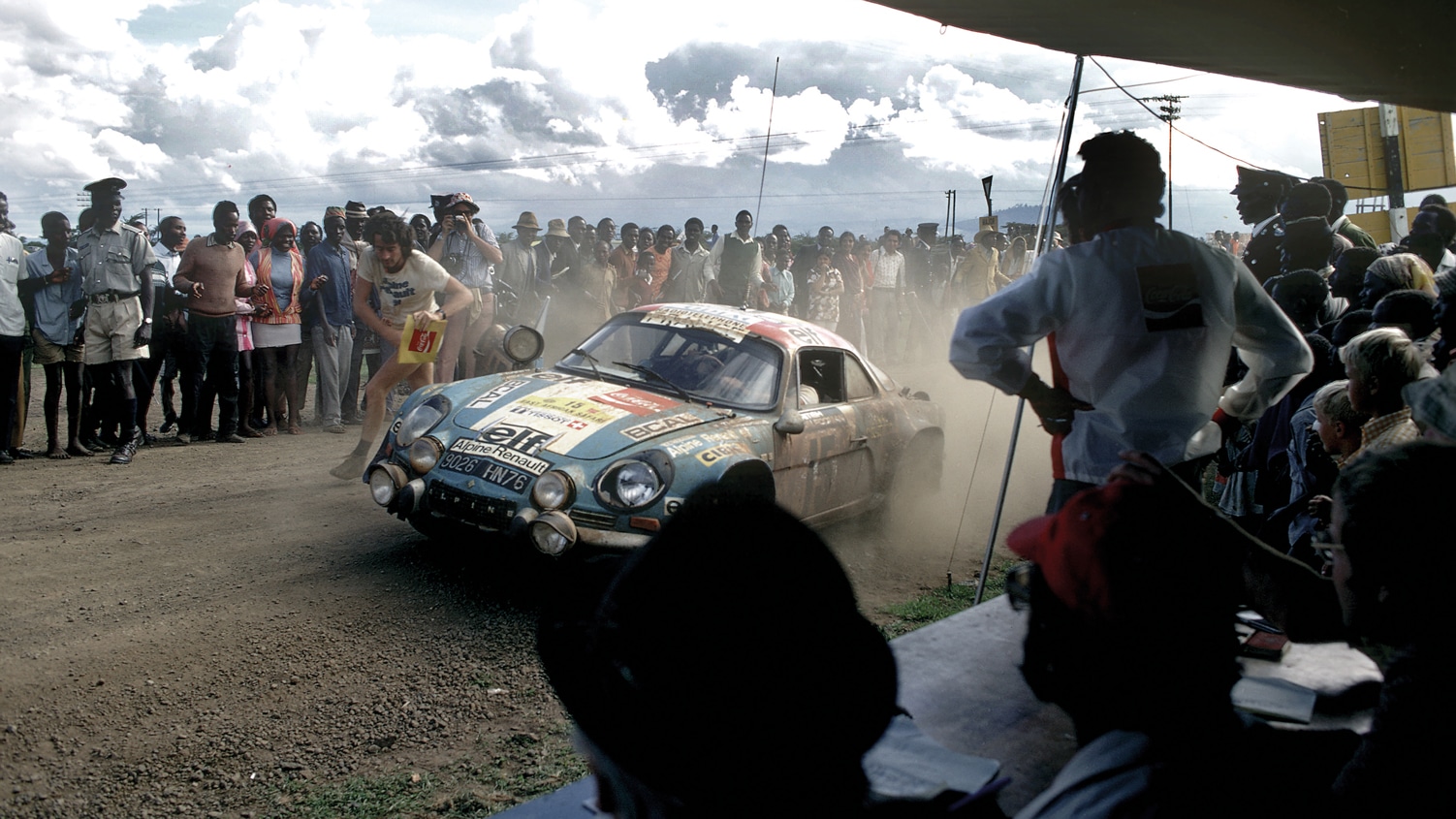
Alpine A110 1800, 9026 HN 76, in the dust of the 1974 East African Safari (DNF)
McKlein
Sometimes all it takes is a fleeting moment; a rapid blur of colour, speed, sound and heat that changes everything. Then you’re hooked. For Murray Lewis, it was no different: aged 16, he was spectating with his dad on the 1973 RAC Rally, and about to have his hitherto unimpeachable adoration for the Ford Escort RS superseded…
That Murray still has the colour photograph of the works Alpine A110 1800 of Jean-Pierre Nicolas he took in that very moment on a dank, gloomy Sutton Park stage, speaks volumes. “I was jumping for joy,” recounts Murray today, “and my dad turned to me and said, ‘You want one of them?’ Murray has no way of knowing today just how seriously his dad took Murray’s reply, but it was the first step in a remarkable story that has spanned more than 50 years.

Is this the same works car? Its owner Murray Lewis believes so
“Once opened, the shipping container revealed a badly crash-damaged Alpine A110 with spares”
Murray’s dad was Donald (William) Lewis, a prominent garage owner in the West Midlands, and someone well-connected in the motor sport world. He was good friends with rallying star Roger Clark, and Murray distinctly recalls bunking off school one Friday to find Denny Hulme enjoying lunch in their home. As the son of a garage owner, Murray inevitably had a passion for cars and worked on them too, developing his skills. He even owned an Austin-Healey 3000 aged just 14. His dad died in 1978, and Murray’s life inevitably took on a different trajectory: after leaving the family business he set up Sutol, selling and racing replica Lotus 23s until the business collapsed in the recession of the early 1990s.
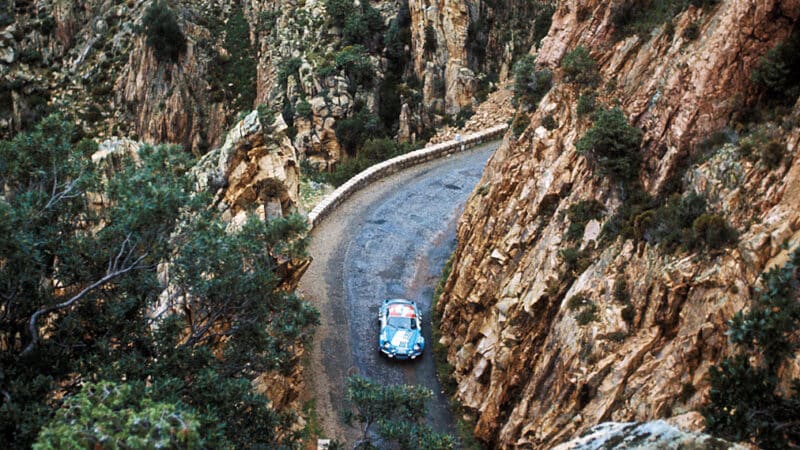
Battling to third in an Alpine 1-2-3 at the 1973 Tour de Corse
Therier
Around the same time, he learnt of a piece of land owned by his father which now needed to be cleared and sold. With the help of a local farmer the undergrowth was cleared and alongside a couple of his father’s Jaguars and assorted paraphernalia was a shipping container. Once opened up it revealed a badly crash-damaged Alpine A110 and a load of spares: was this a present that his dad had intended to pass on to him had he lived; his dad’s answer to the reply he had given stage-side all those years ago? Murray can never definitively know his dad’s intentions, but took the crumpled remains back to his small garage at home and assessed the find. It was in a poor condition, but wiping away some of the dirt and dust revealed it was painted just like the works rally cars.
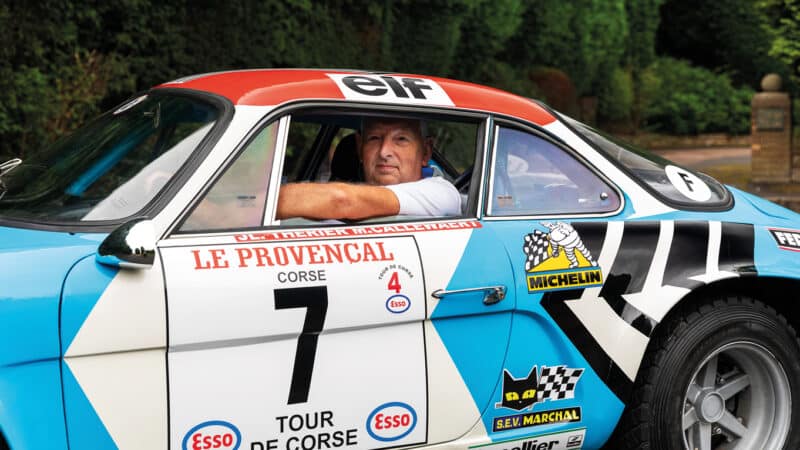
Lewis in his pride and joy
McKlein
What Murray didn’t know at the time was that his crumpled Berlinette wasn’t just any old A110, but a key piece of Alpine history, presumed lost forever. Registration 9026 HN 76 was one of the final two works A110 1800s built in the 1973 season and came home third with Jean-Luc Thérier and co-driver Marcel Callewaert on that year’s Tour de Corse rally, helping to deliver the inaugural World Rally Championship to Dieppe (in stark contrast to Alpine’s miserable 2024 Formula 1 season) and, in theory, the driver’s crown to Thérier. In 1974 it had been driven again by Thérier in the East African Safari Rally, only to retire after an accident that was heavy enough to terminally damage the chassis. Yet 9026’s life wasn’t through yet, and in 1975, rebuilt again, it was dispatched once more to Africa for recce car duties ahead of that year’s Safari. By now Alpine was fading as a force in the WRC, the glory years behind it as Lancia and its Stratos took charge. There then followed another significant twist of fate.

Lewis’s photo from the 1973 RAC Rally
McKlein
The following story has evolved in accuracy over the years, but Murray relays what the man in the driver’s seat on the day in question told him recently during a get-together in Dieppe. “Jean-Pierre Nicolas was recceing for the rally with co-driver Vincent Laverne. They were on a rough, sandy surface, in third gear, full throttle, around 100mph. Jean-Pierre set the car up [in a drift] for a corner and when he reached the apex he saw a Renault 4 coming the other way. He corrected, and turned right to avoid the car, but the lady driving the Renault also altered course and there was a head-on collision. The spare wheel, located under the front of the car, was pushed back and gave Nicolas a split lip and chest injuries, while Laverne was hit by the front wheel being pushed back into the car, breaking his ankle and trapping him.” There followed some tense moments with the risk of fire readily apparent, but thankfully Laverne was extracted from the car and the Alpine crew ended up in hospital at Mombasa. The Renault driver was apparently unharmed.
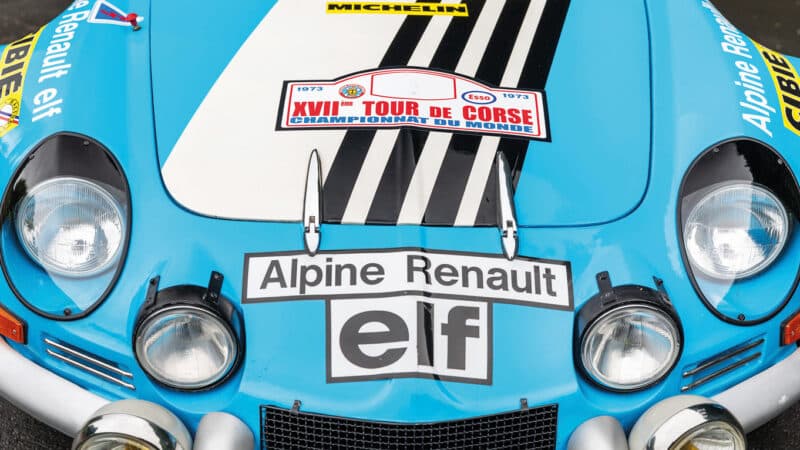
The car today is in Tour de Corse ’73 livery
DPPI
“Murray feels the time is right to pass the car to a new owner”
The damaged A110 ended up at a Caltex petrol station and garage in Nairobi, where the Alpine mechanics stripped it of valuable parts including the engine and ’box, which were sent back to France. The identity of the car was also returned, and what was left seems to have been abandoned there. That is until Murray’s dad arrived, who was out there with Roger Clark, the latter competing in the 1975 event. Lewis Sr appears to have done a deal for the remains and after a while, the car and assorted other items turned up at Roger Clark’s place in the UK, before heading to the mysterious field and its resting place.
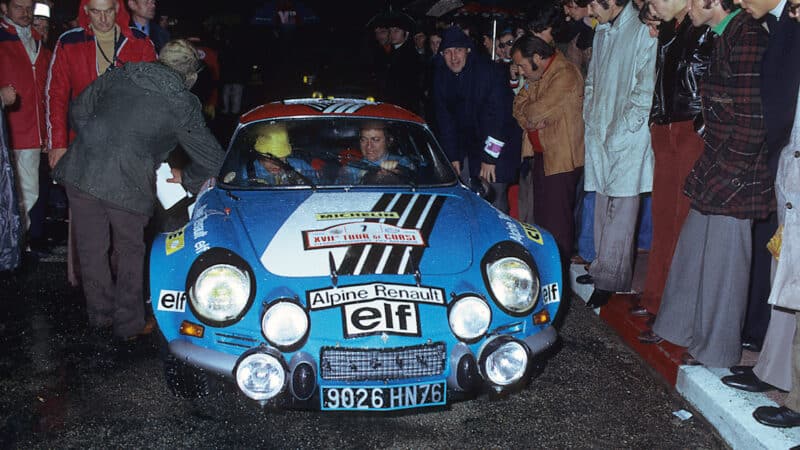
Jean-Luc Thérier at the wheel in Corsica
DPPI
Murray began by stripping the A110 back to its bare shell, but was contacted by marque expert and author Roy Smith, who told him what he believed he had. Smith had spent 30 years trying to track down the elusive missing works car. Now aware of the car’s importance, Murray set about restoring it over the next quarter of a century, buying parts and completing jobs as and when time and limited funds allowed.
“I had help from my brother,” says Murray. “The car is not perfect, it’s only got a few Group 4 bits as you can’t get them now. It has the ‘Maroc’ front wishbones, which have shrouds to protect the dampers, but it has Renault 12 calipers – which a lot of the teams in the period used anyway. In the box of bits were new engine blocks and cylinder heads. I had them cleaned up and machined, and it now runs with a standard crank but forged pistons and steel rods as per the works cars. It has a reliable 170-180bhp.”
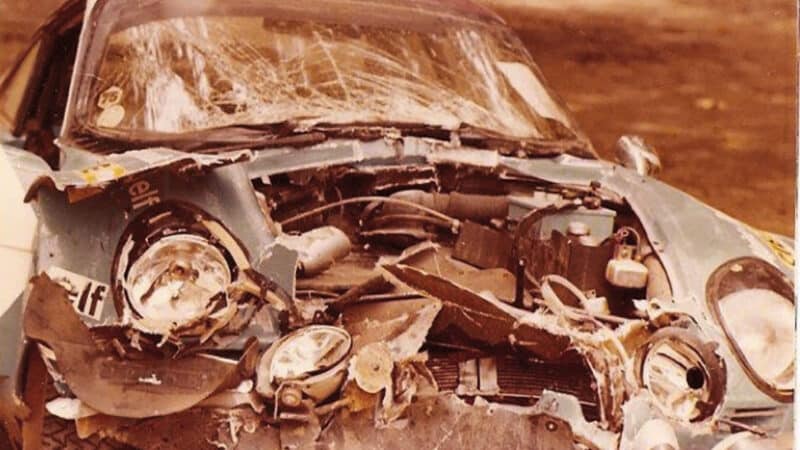
Alpine’s A110 was involved in a head-on collision during a 1975 rally recce in Kenya
McKlein
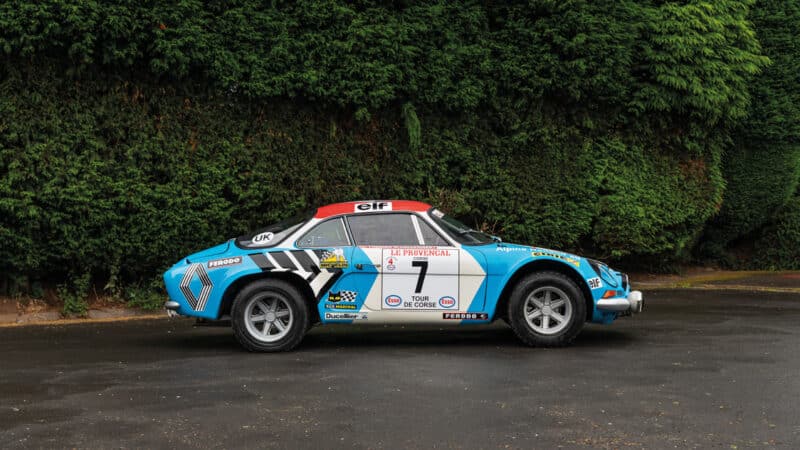
It became a lost works car – but it was hidden in a container
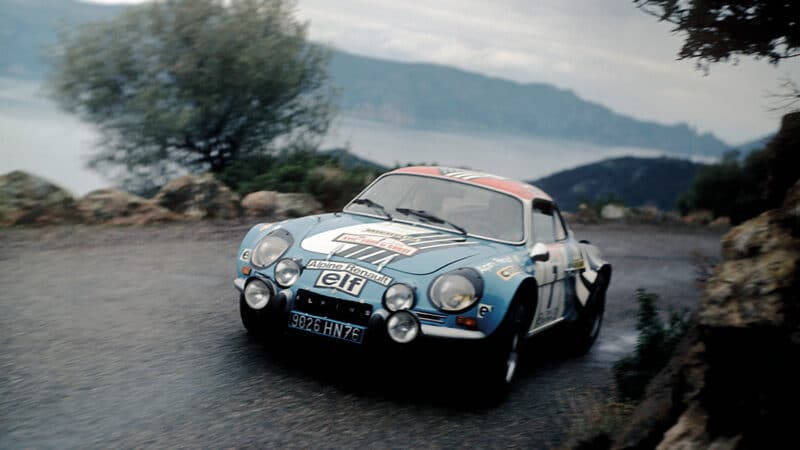
Jean-Luc Thérier and Marcel Callewaert on a dank December day in 1973, but Alpine lit up the final WRC round
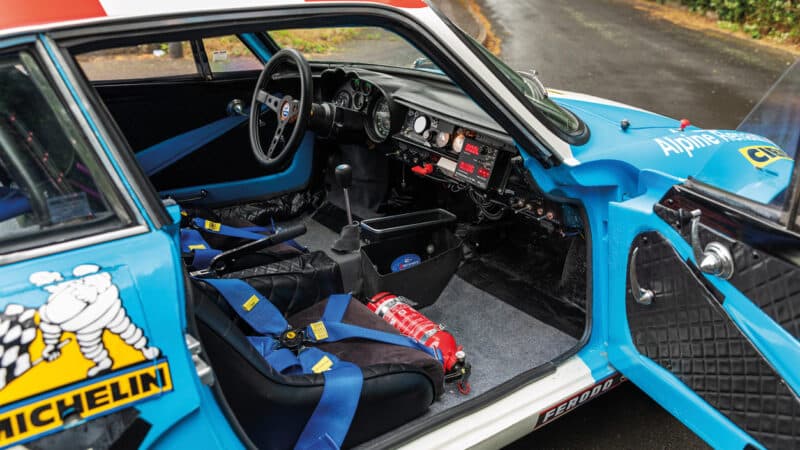
Painstakingly put back together over 25 years
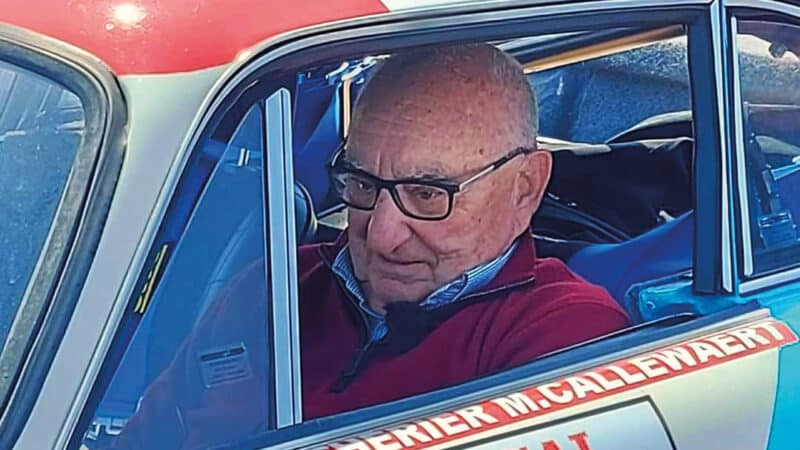
Jean-Pierre Nicolas in a familiar seat
DPPI
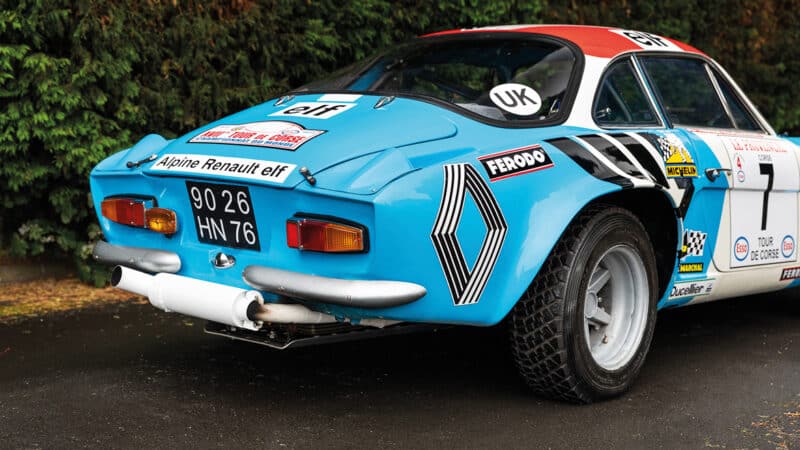
Going to a new home
Iconic Auctioneers
Murray completed the restoration in 2023, and although this task of a lifetime has given him so much satisfaction in its completion, you sense it’s the human angle that is most precious. Obviously, there’s the link back to his dad: “I’ve done what he wanted – I’ve put it back on the road.”
Although the French authorities refused to allow its original registration of 9026 HN 76 to be put back on it after its demise in Africa (the pictures here show the car with show plates fitted), there’s no doubt in Murray’s mind that this is indeed the long lost ex works car, albeit rebuilt using new and sourced parts.
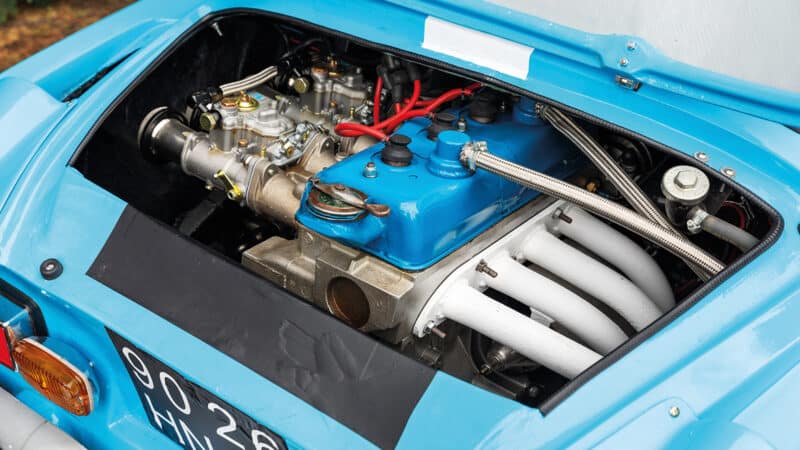
The car’s original engine was removed after its 1975 collision
“Jean-Pierre Nicolas spent an hour sat in the car talking [at the event in Dieppe]. It was even used for a recreation of a Tour de Corse service area with a group of the original mechanics re-enacting working on it. Half were in tears!”
Jean-Luc Thérier and the Musketeers
The all-French Alpine line-up were the stars of ’73
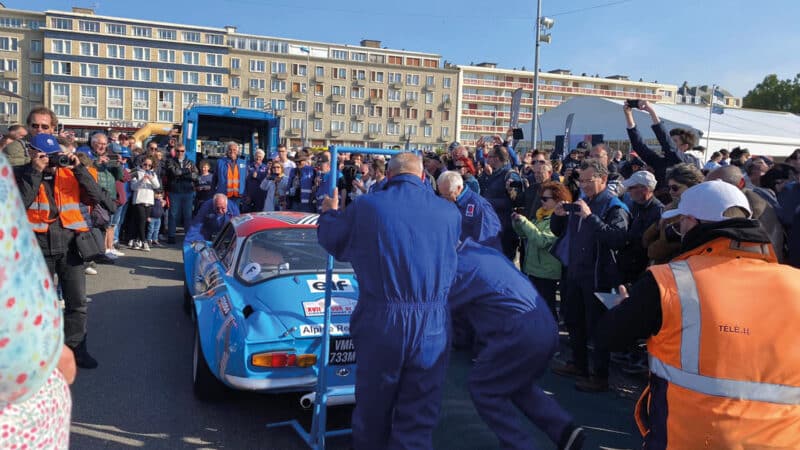
Former Alpine workers had the chance to recreate a rally service area last year. The car was up for auction in September with Historics Auctioneers and an estimate of £160,000 but failed to reach its reserve
Iconic Auctioneers
Jean-Luc Thérier, inset, was one of that select band of rally drivers who can connect with the people in a way that transcends simply driving a car and winning trophies. His sideways style and joie de vivre made him a star of the sport and beloved of his adoring French fans, not unlike François Delecour 20 years later.
Thérier had started by racing karts, but it was on the stages where he made his name, particularly after he joined the Alpine team in the late 1960s. He competed in the Monte Carlo Rally 13 times but never won it, and also made four appearances in the Le Mans 24 Hours.
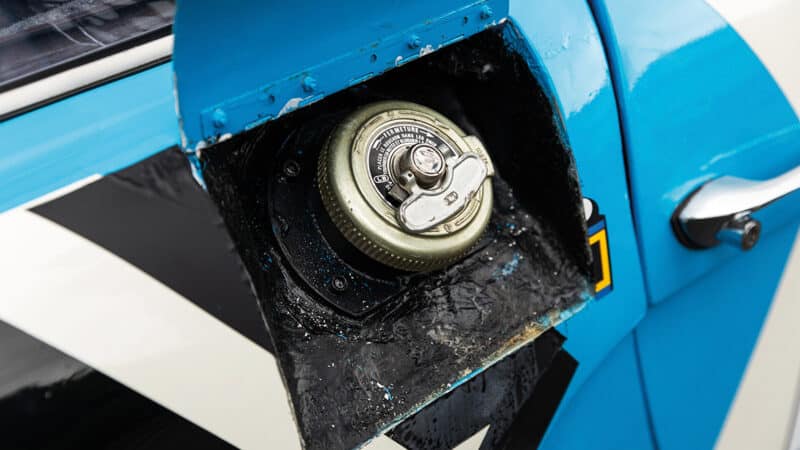
Essence, s’il vous plait
Historics Auctioneers
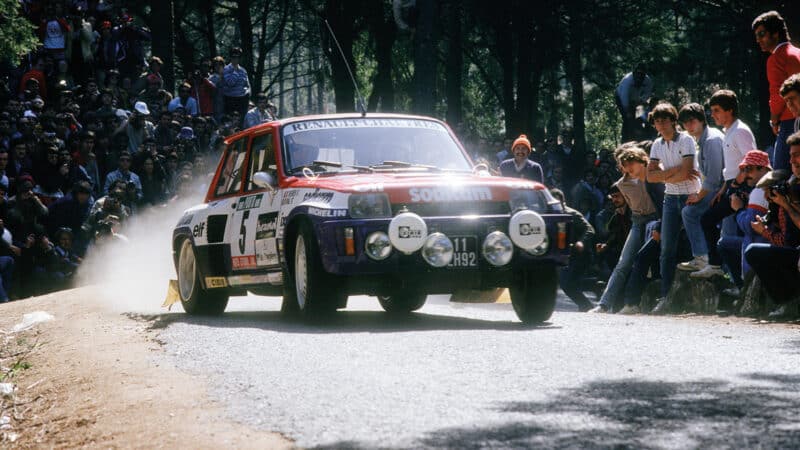
After his Alpine years, Thérier was back to winning ways with a Renault 5 Turbo
In 1973, the first year of the WRC, he notched up three victories that helped Alpine to the title. The big team from a small manufacturer were christened the ‘Musketeers’ by the British press for being an all-French crew, with not only Thérier but stars like Jean-Claude Andruet, Bernard Darniche and Jean-Pierre Nicolas. Therier’s wins would have made him world champion, but there was no such thing; a driver’s title wasn’t official until 1979.
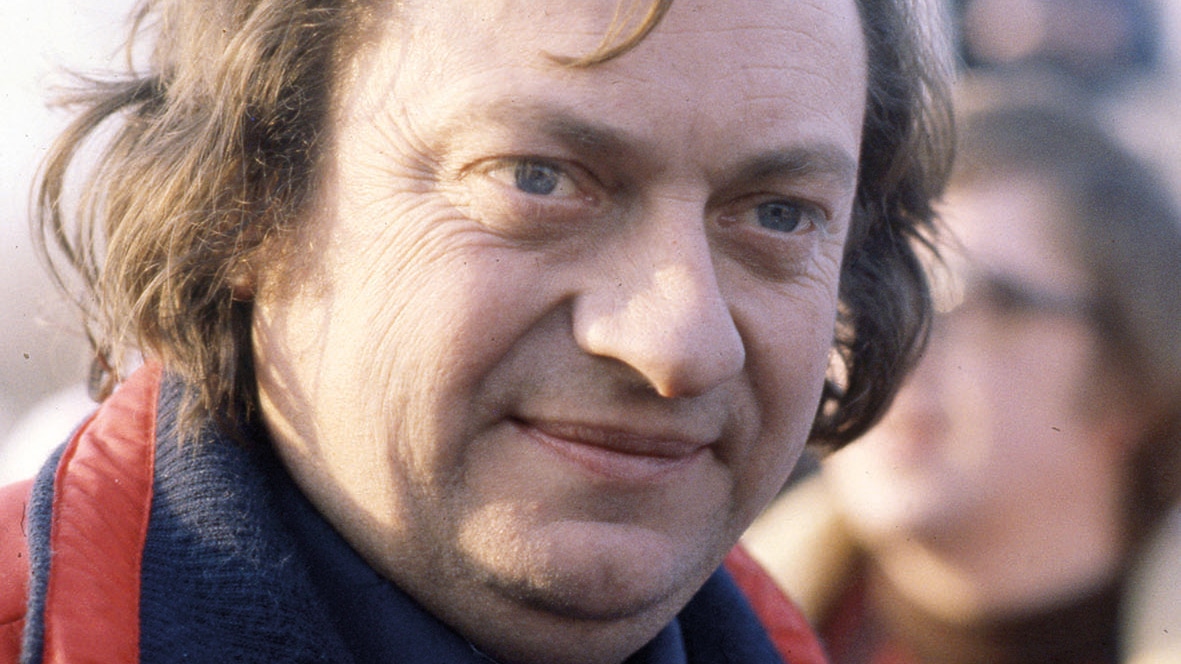
After leaving Alpine he suffered some fruitless years with Toyota before winning the 1982 French Rally Championship in a Renault 5 Turbo. He was challenging for the lead in the 1985 Paris-Dakar rally when he suffered a serious accident which led to his left arm being paralysed and the immediate end of his competitive career. The ‘champion that never was’ and the darling of French rally fans died in 2019.
